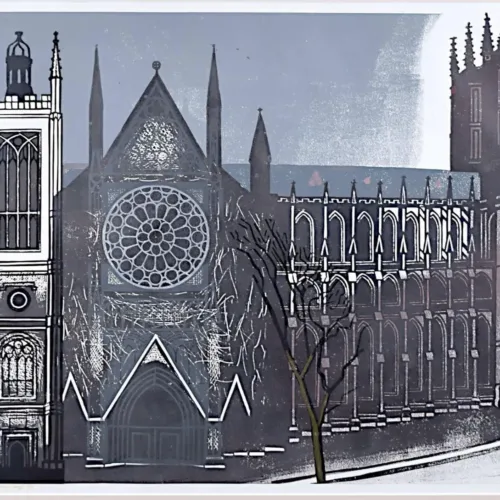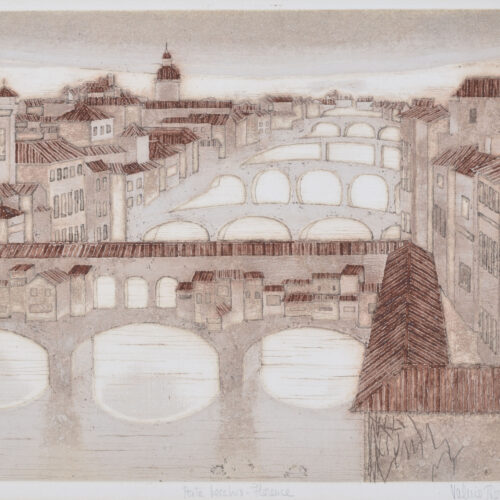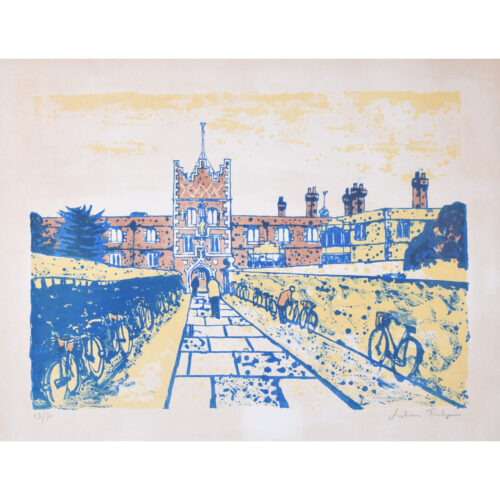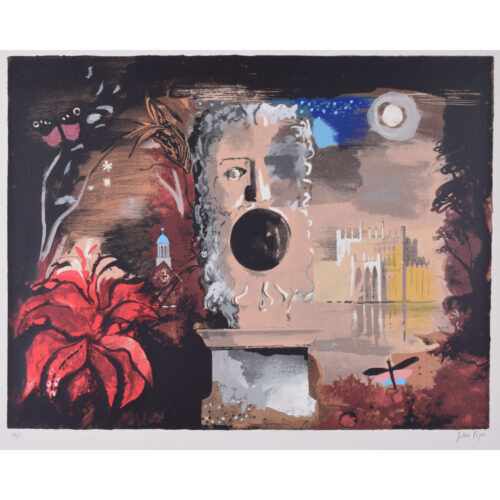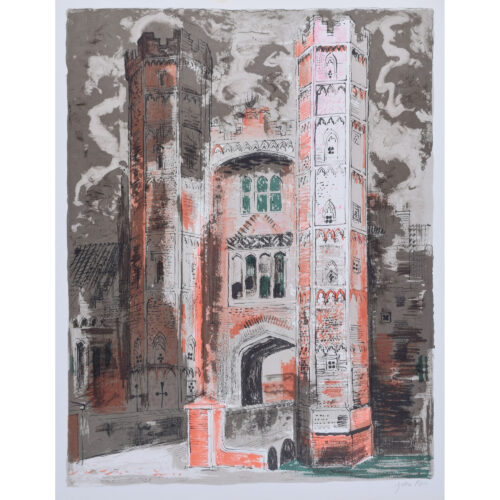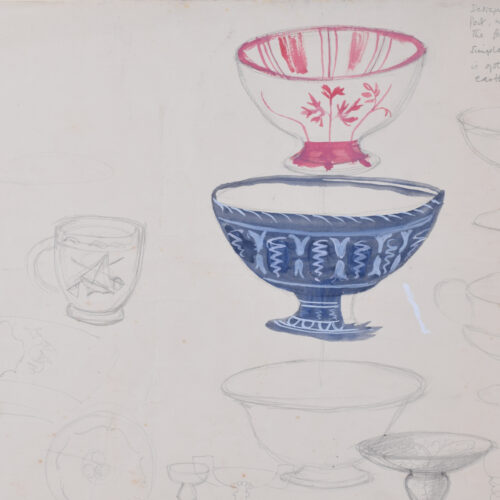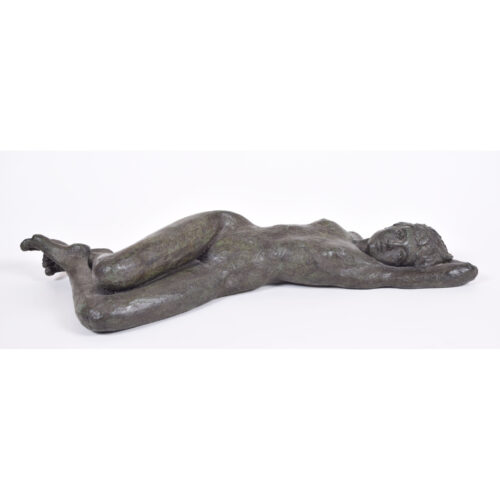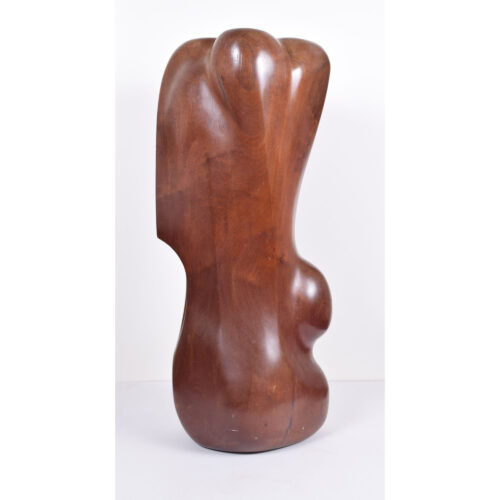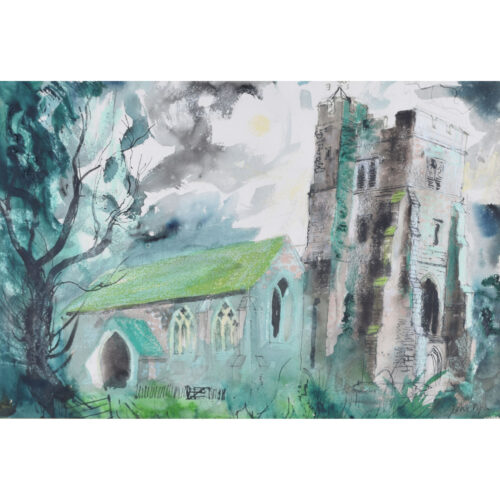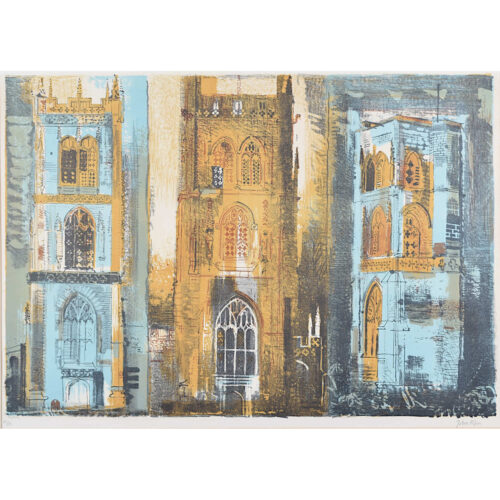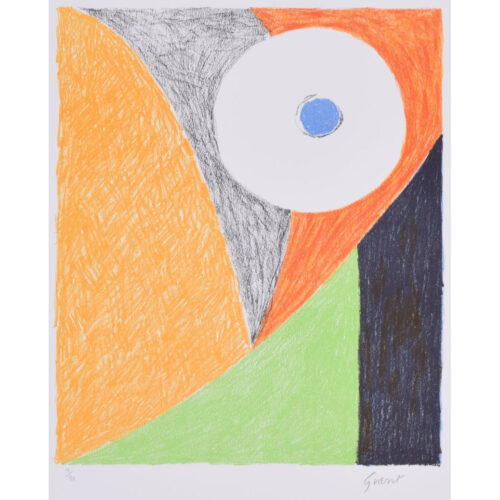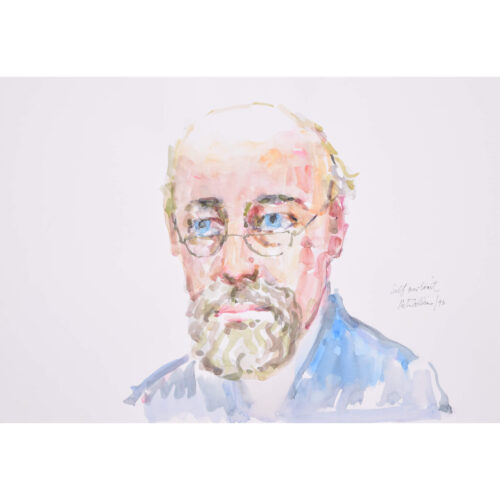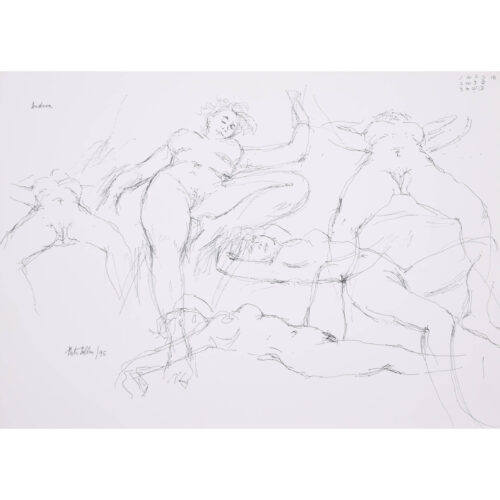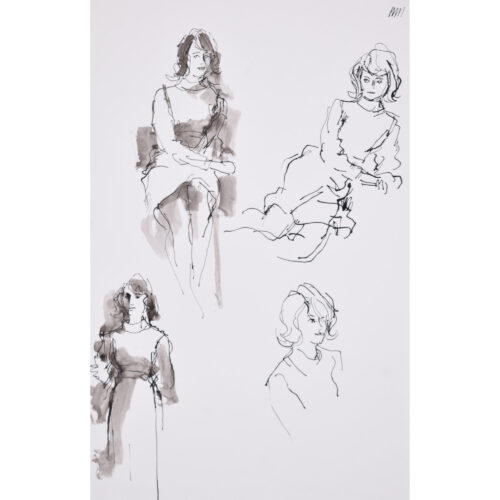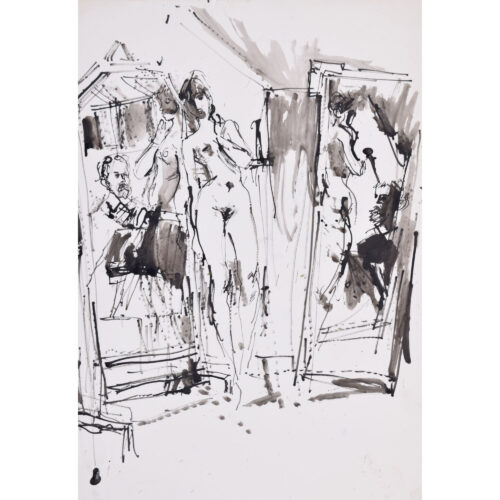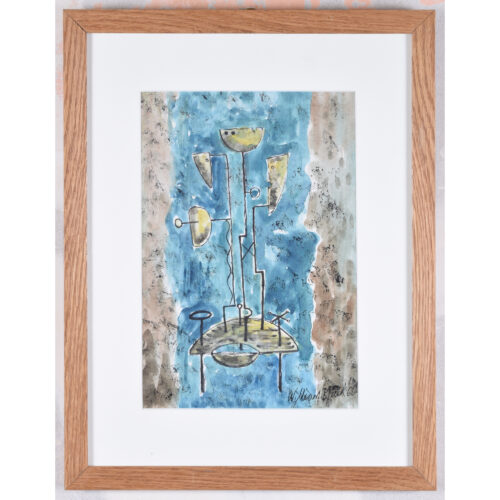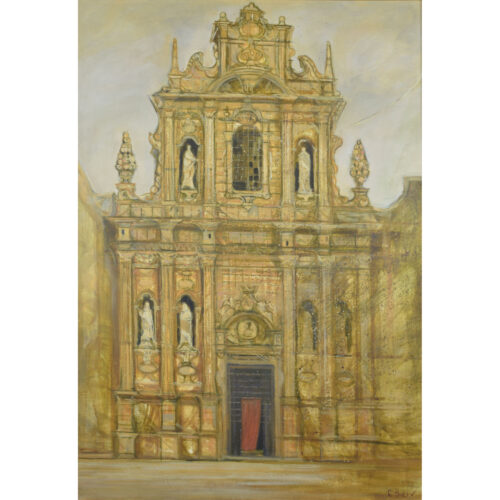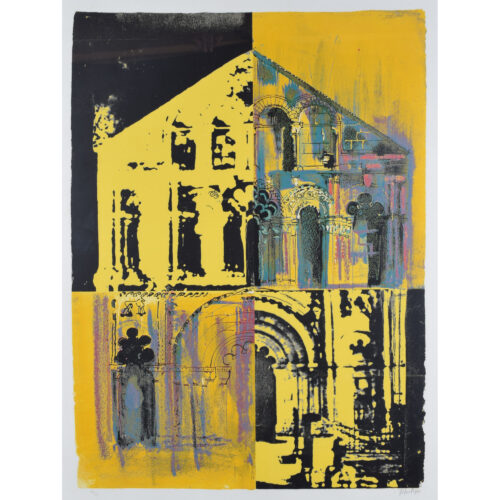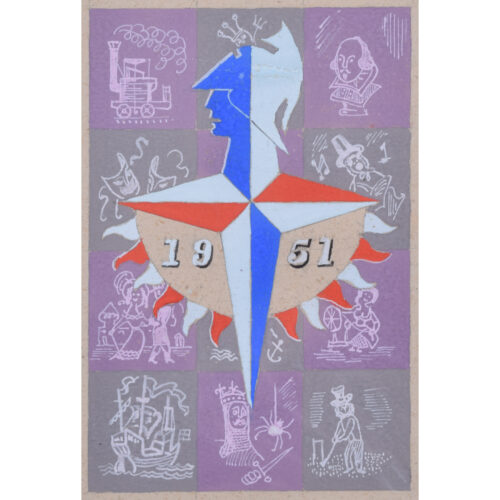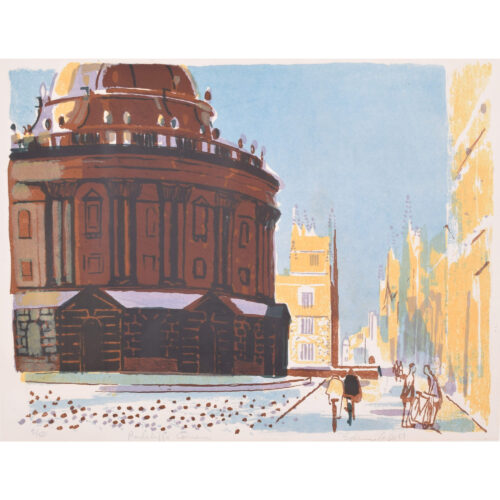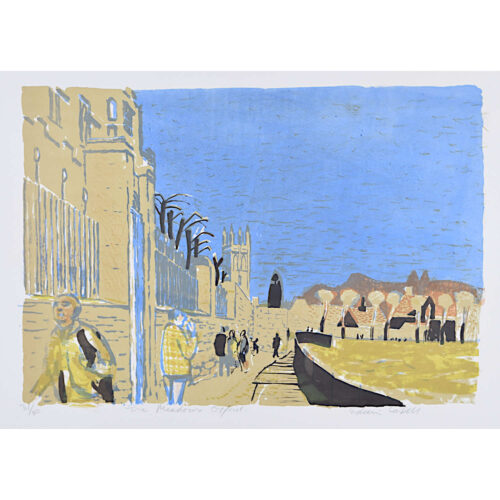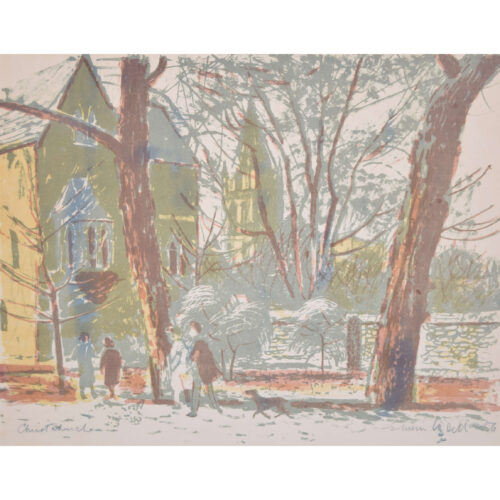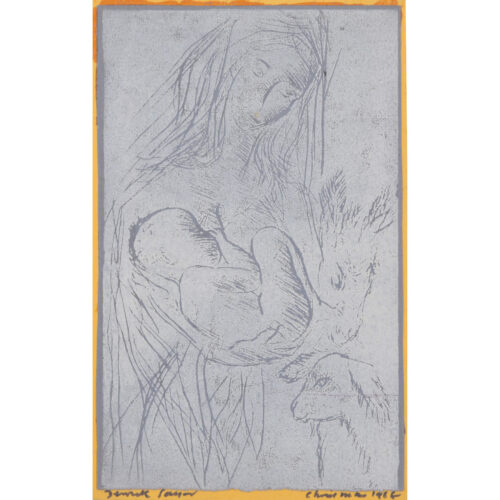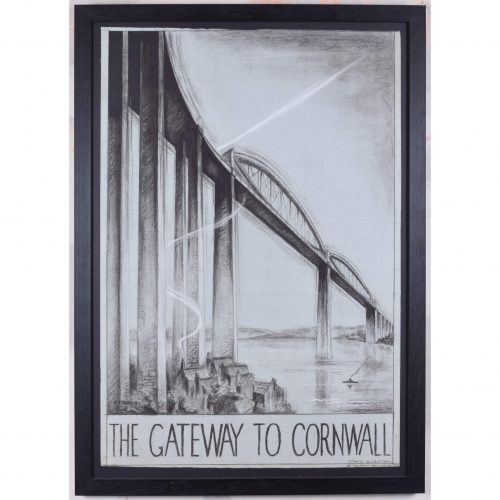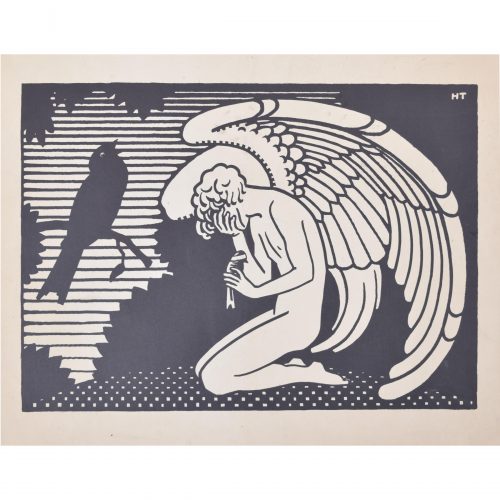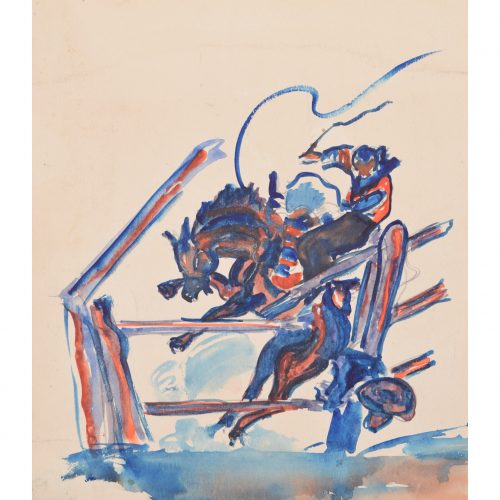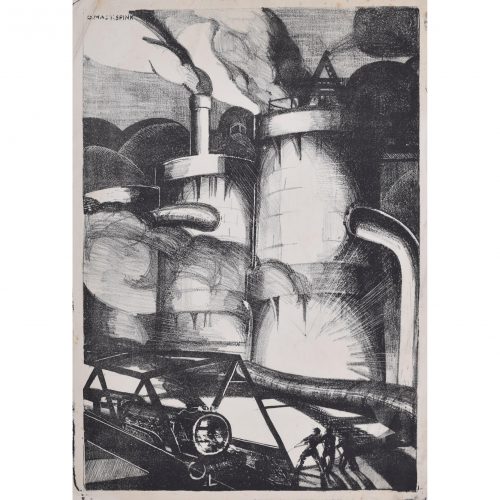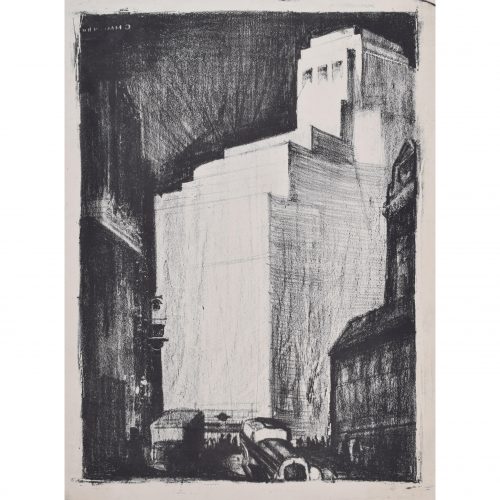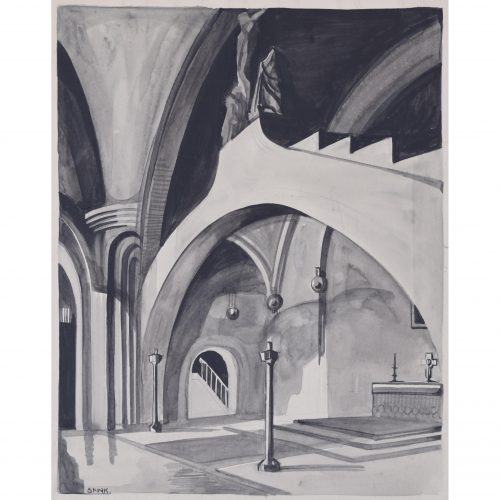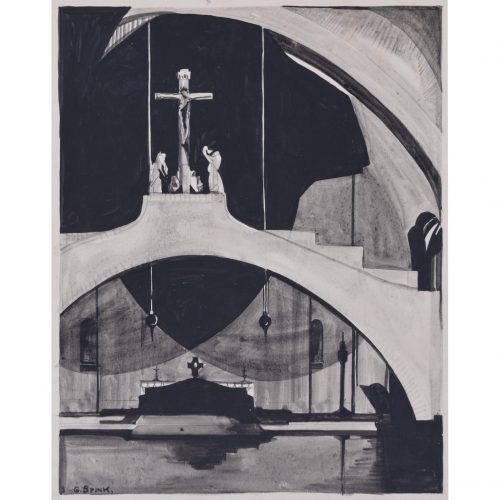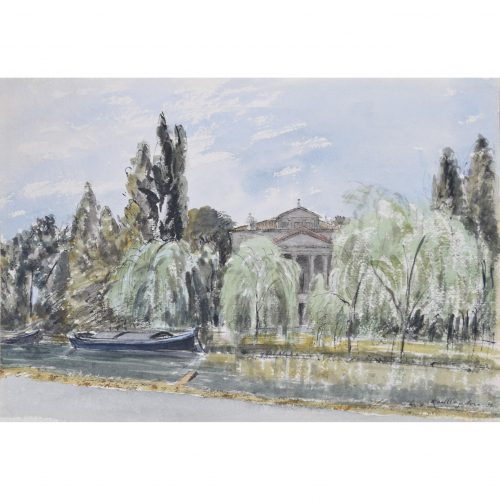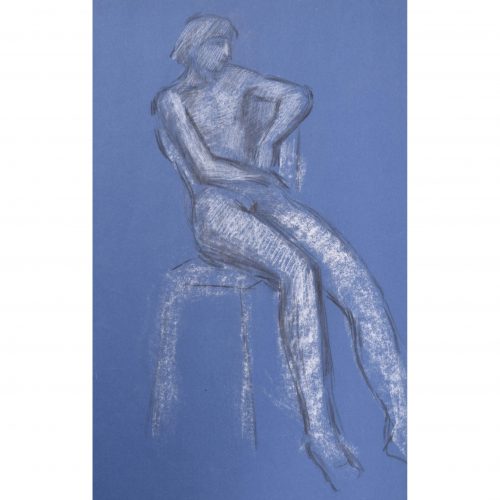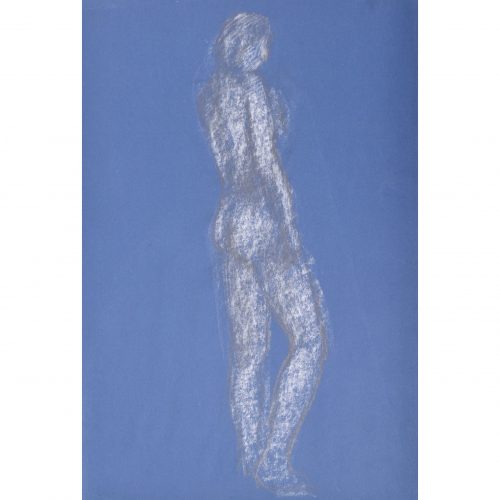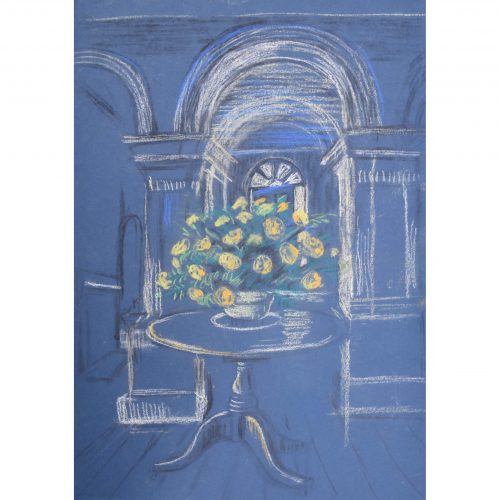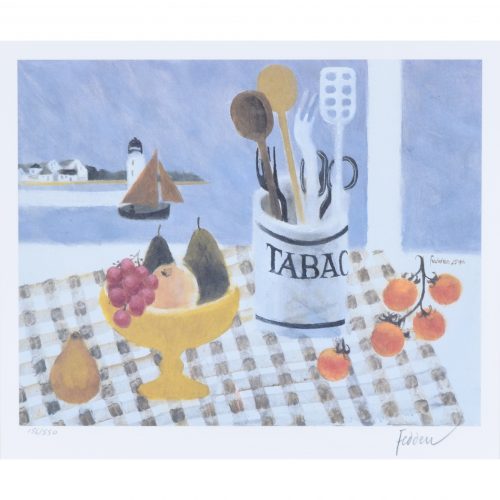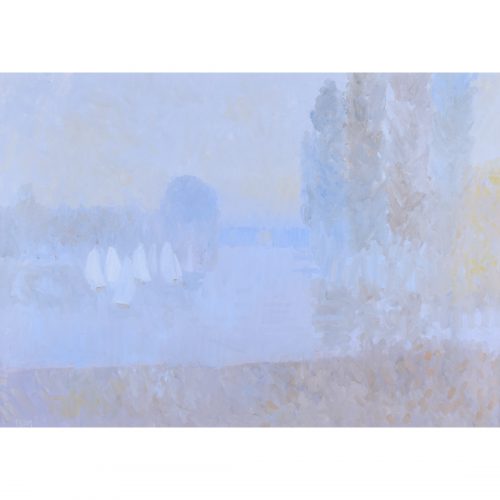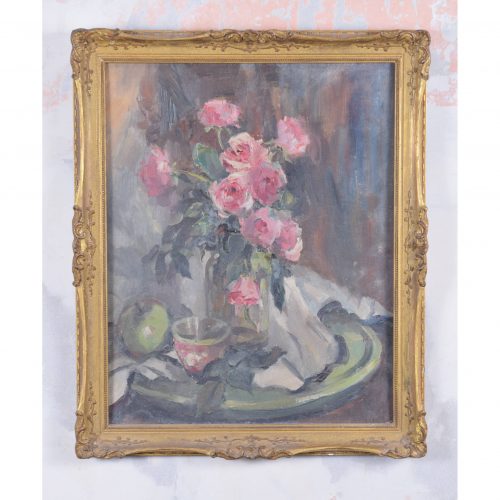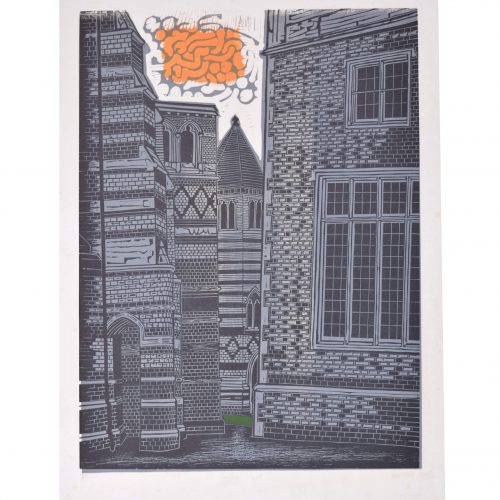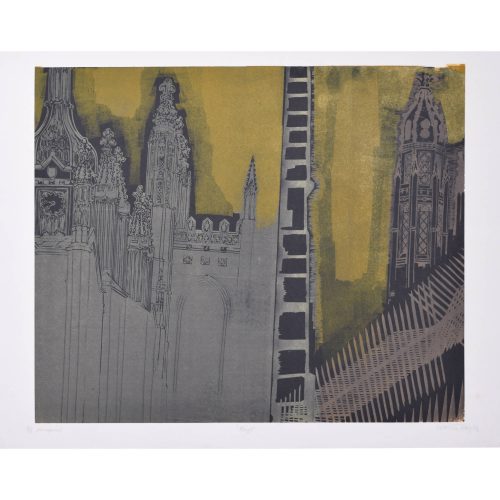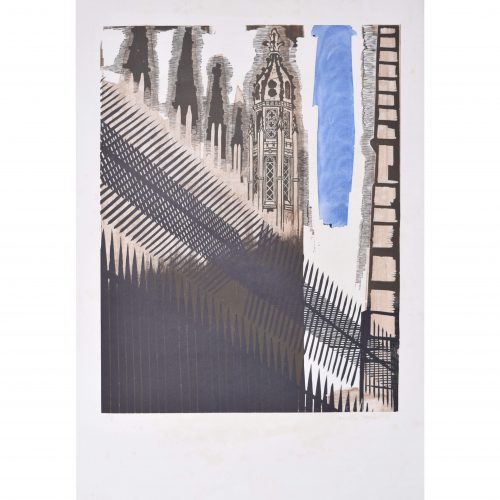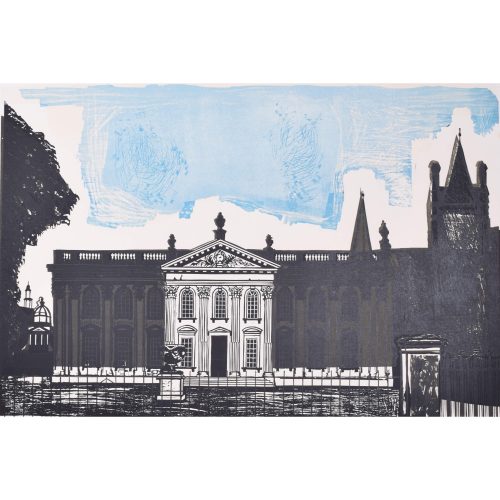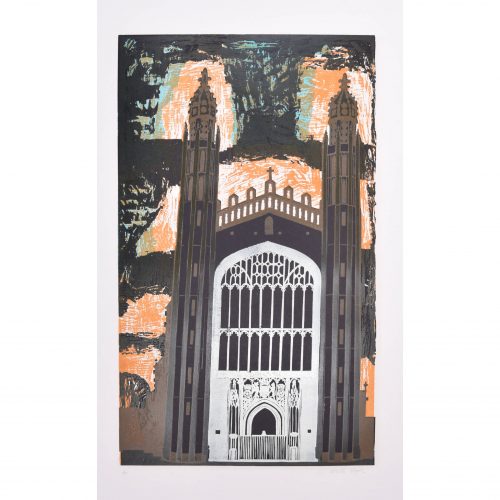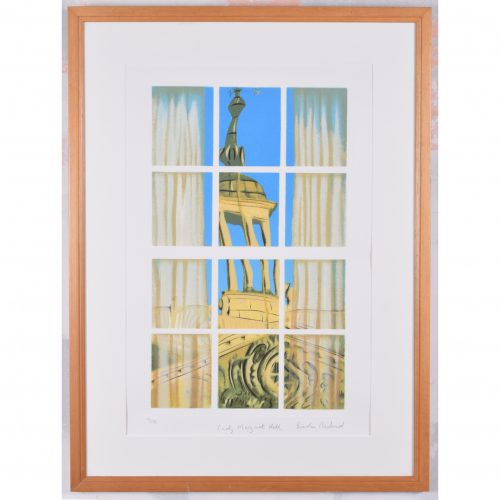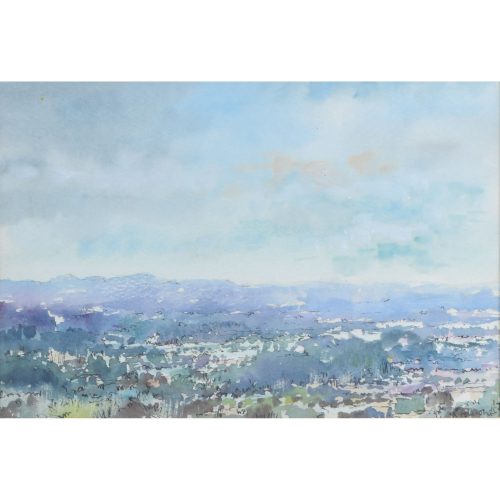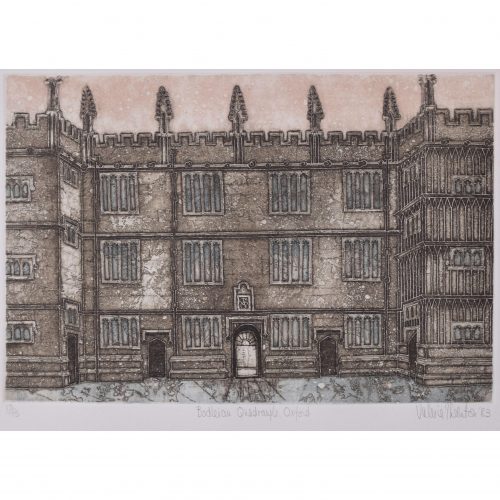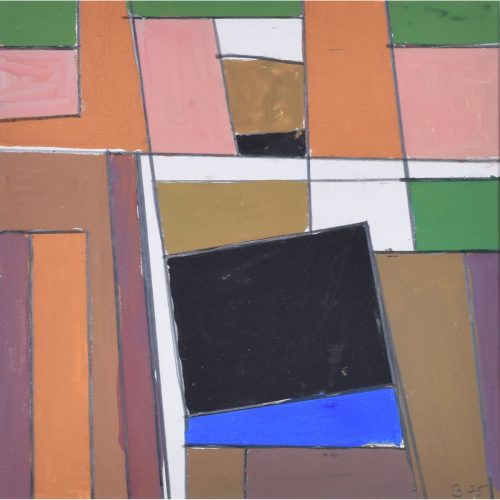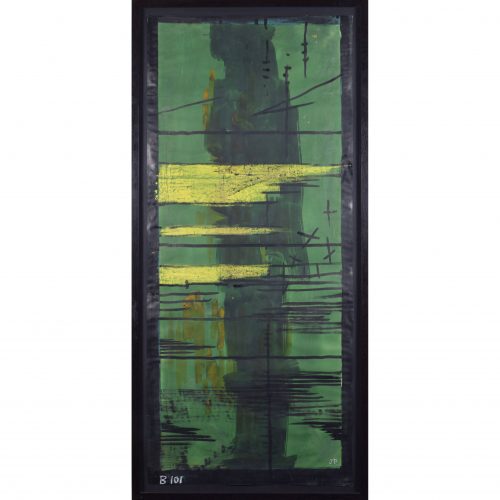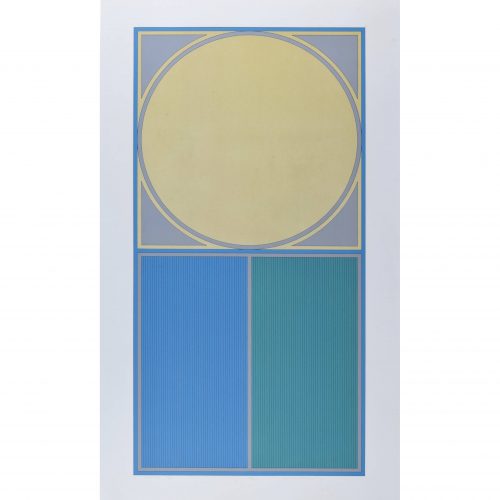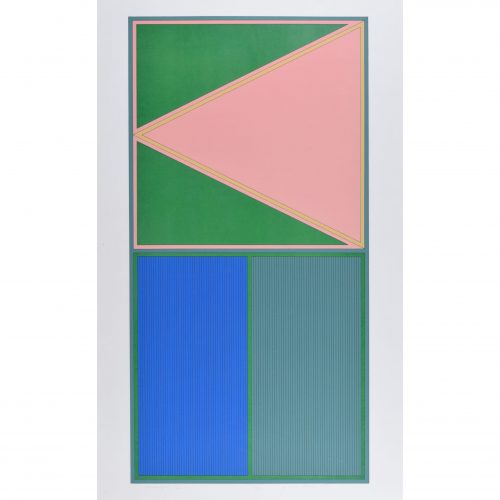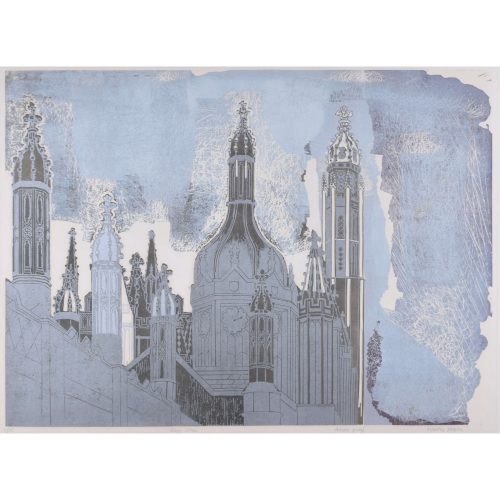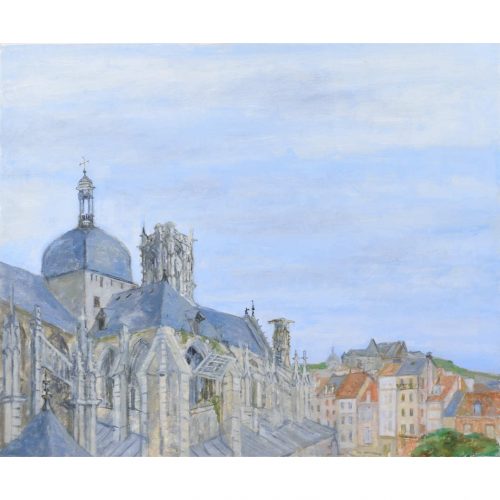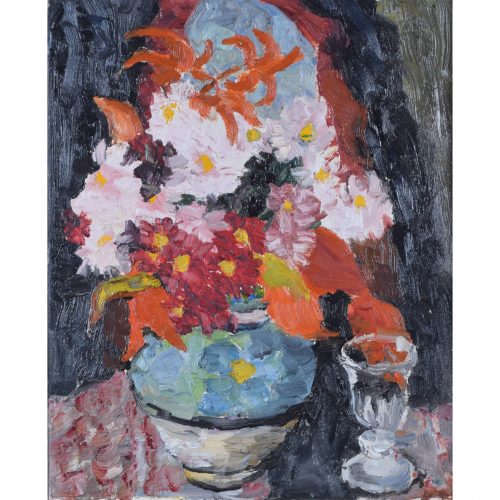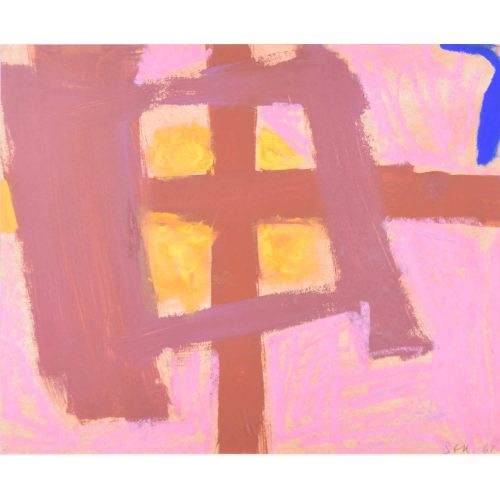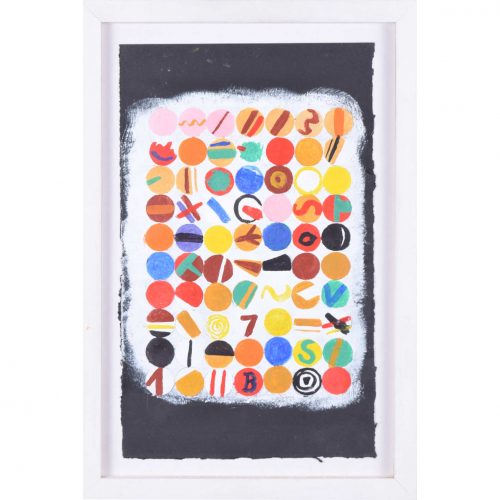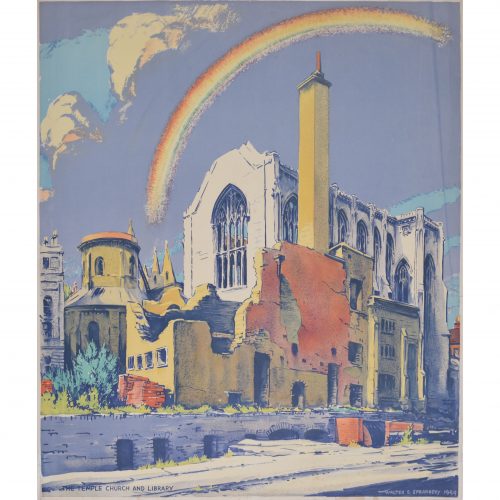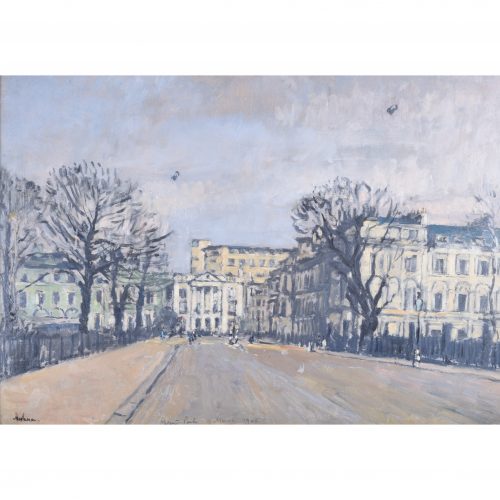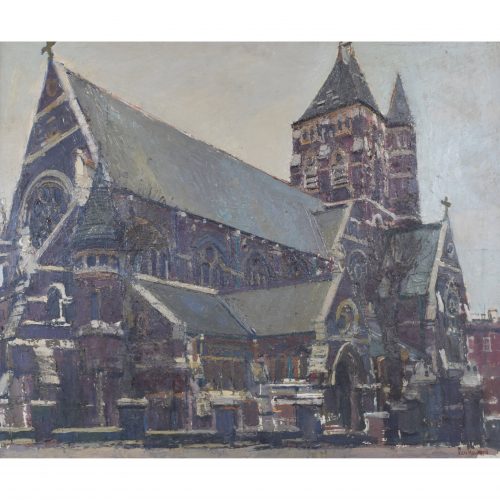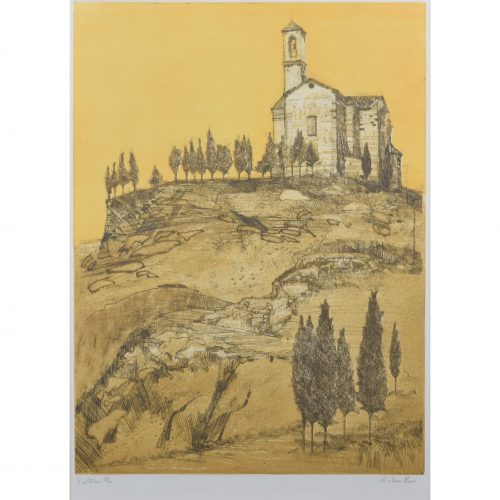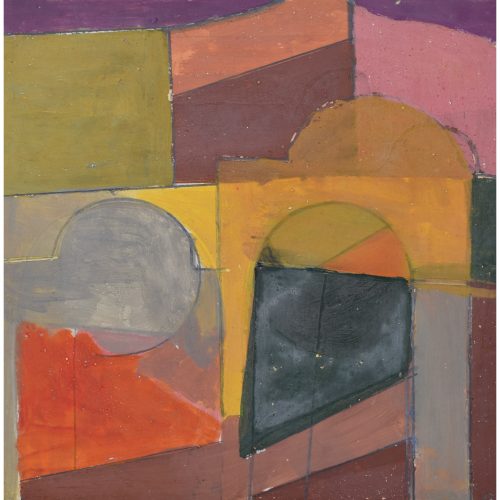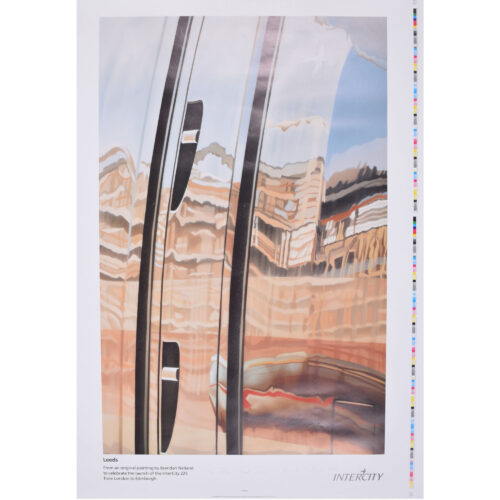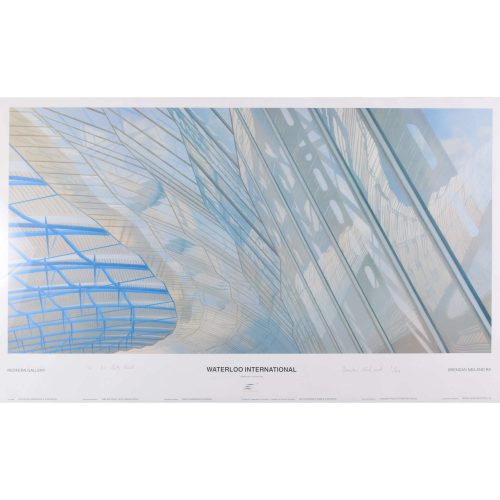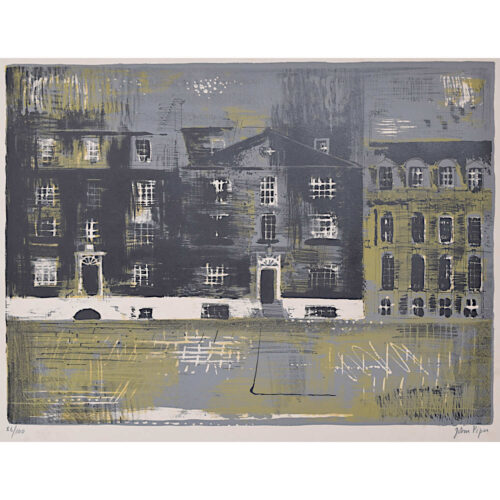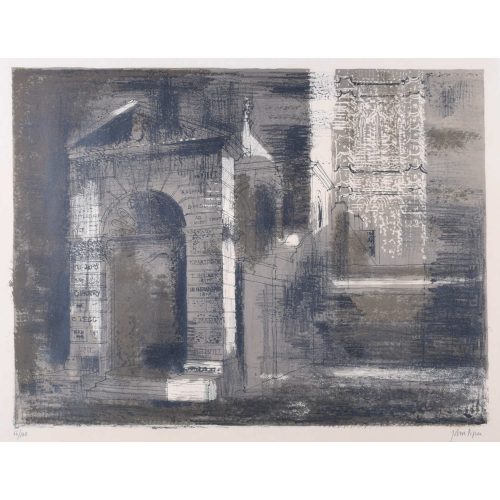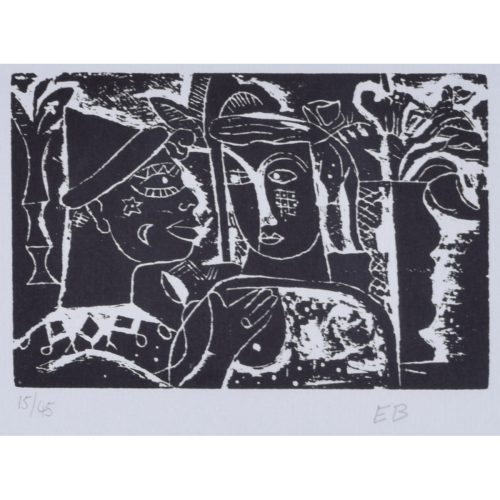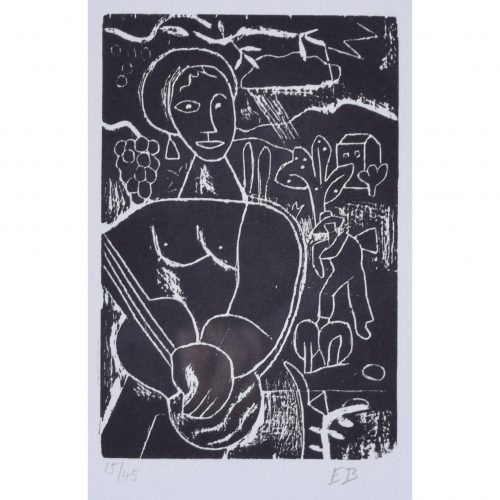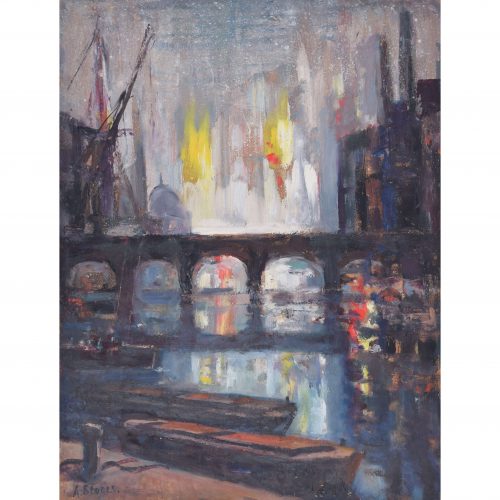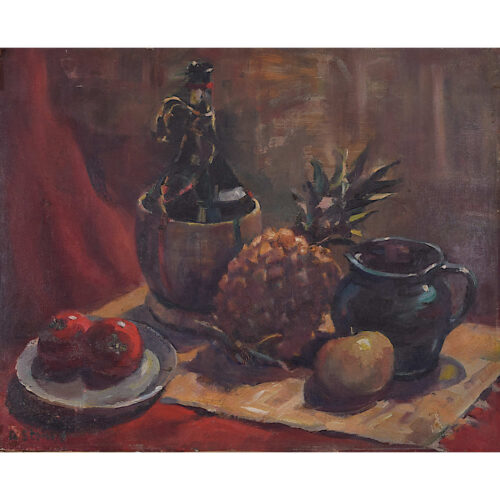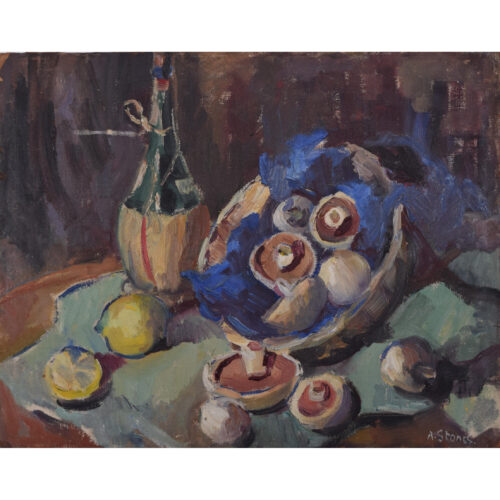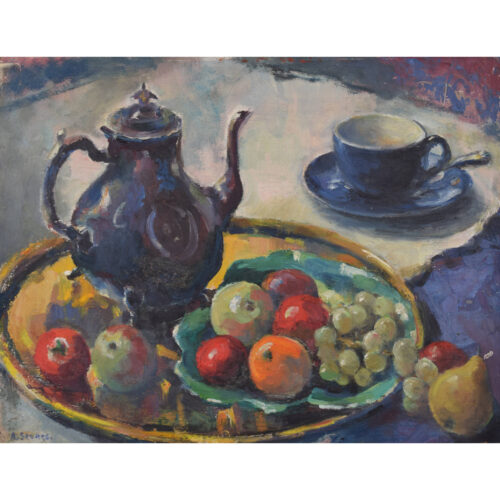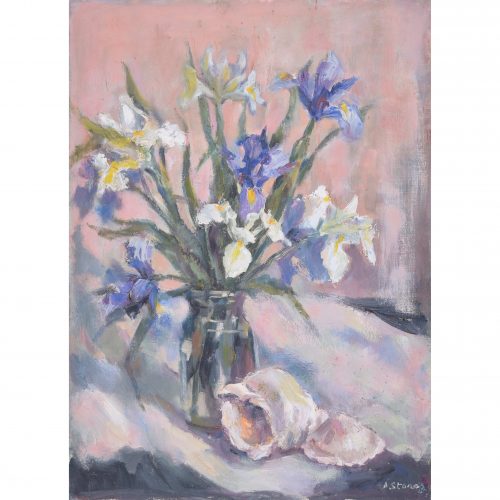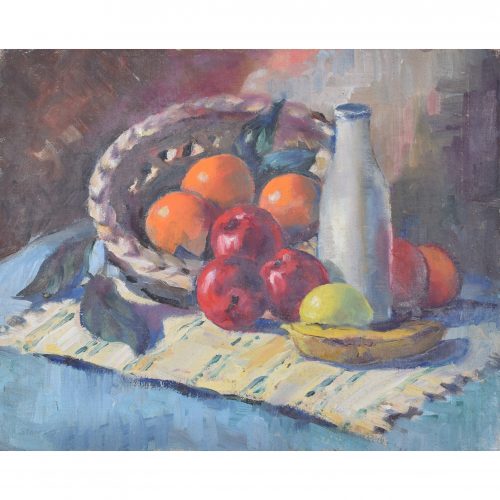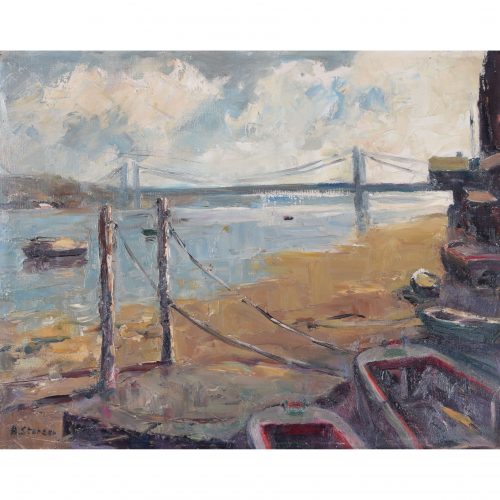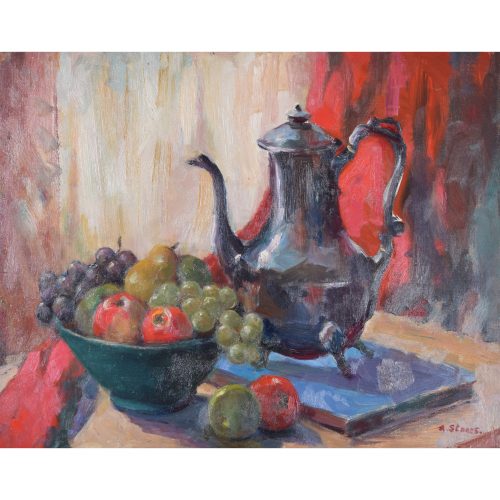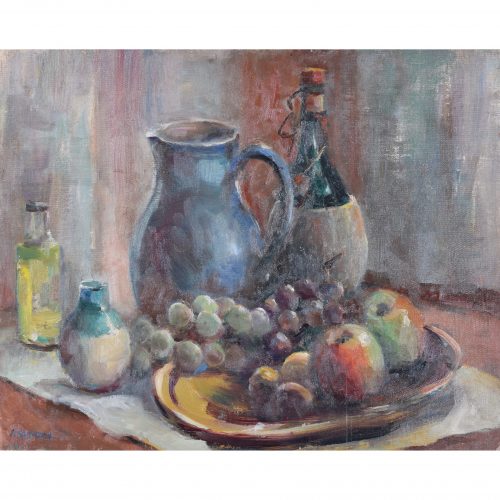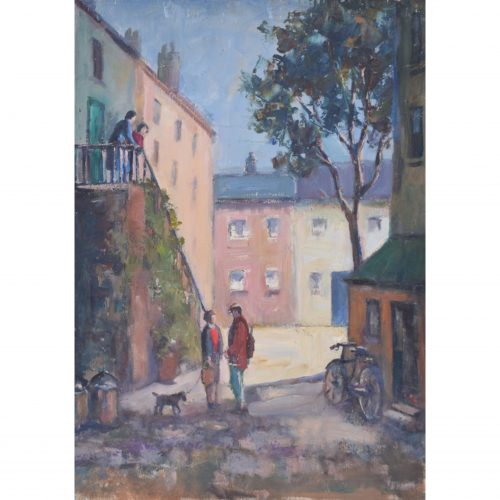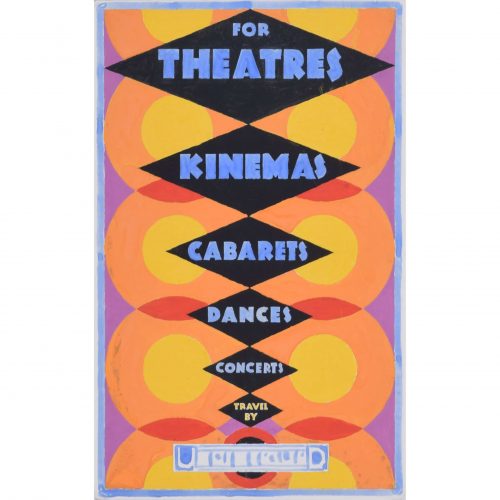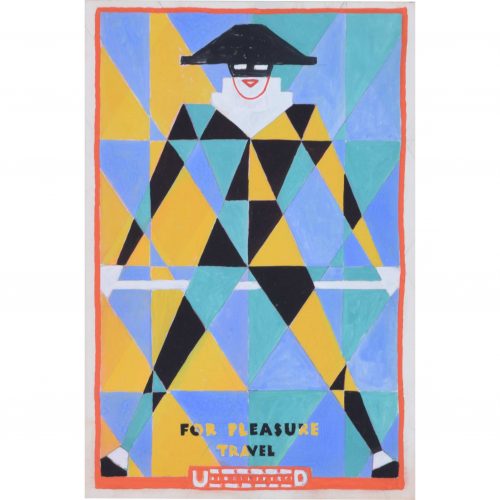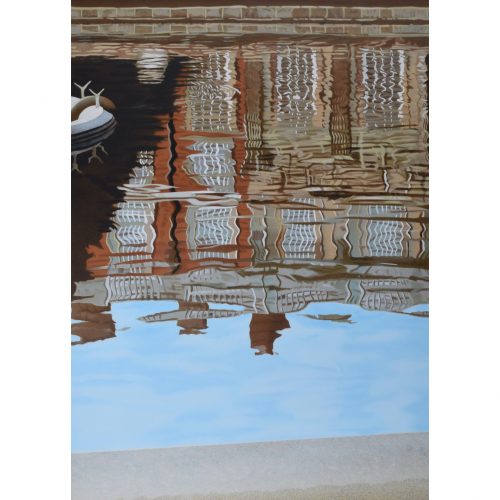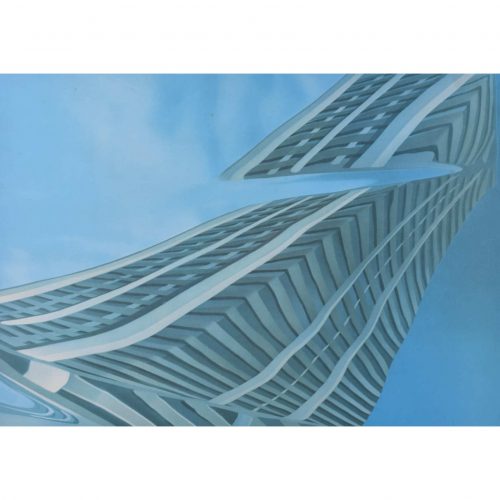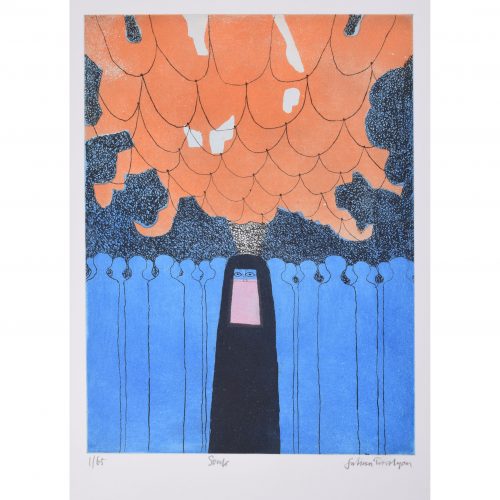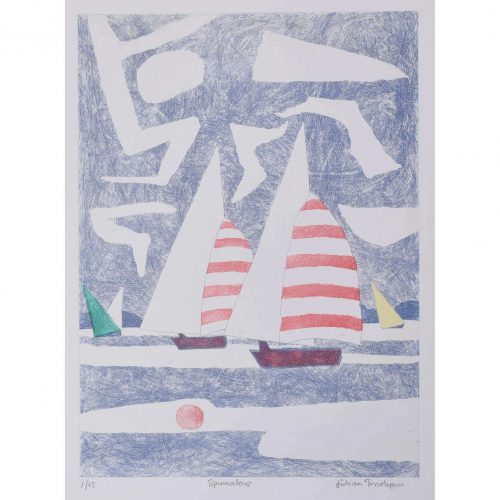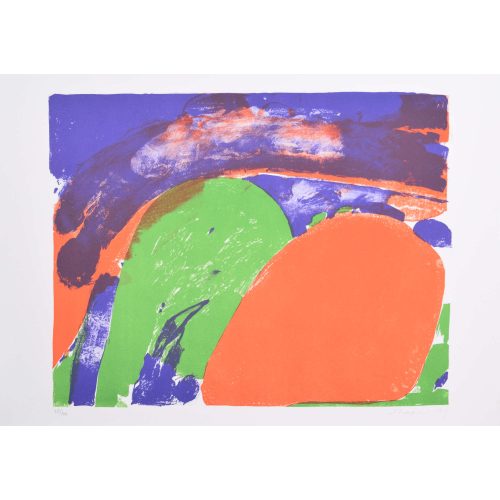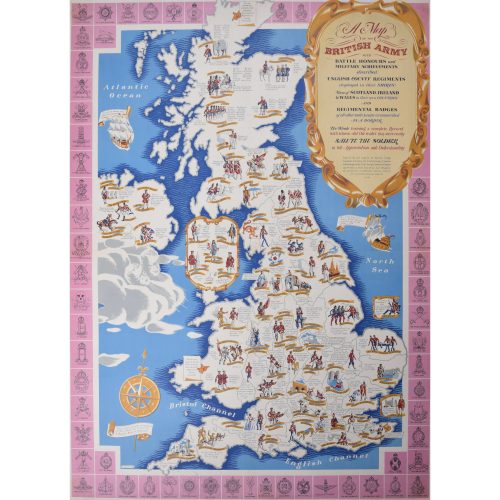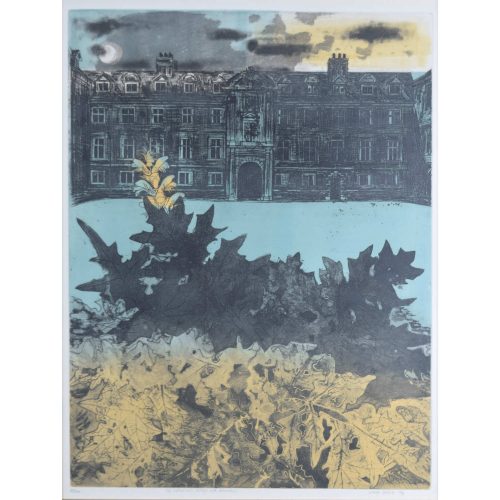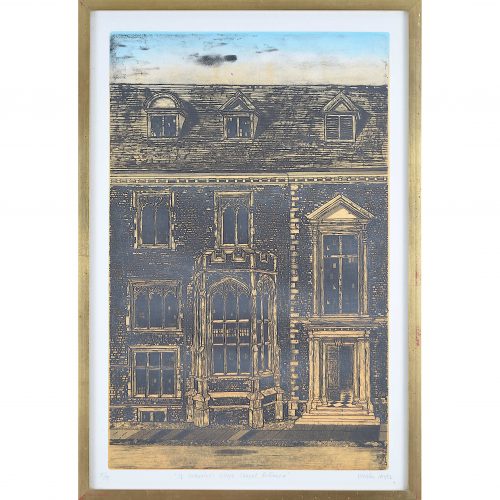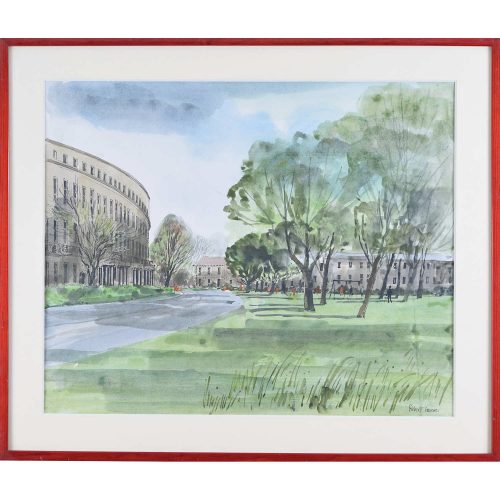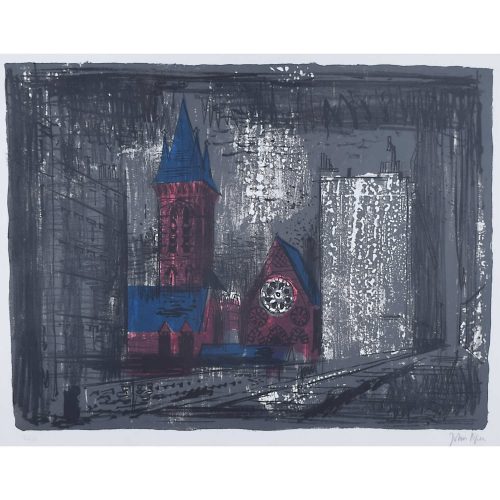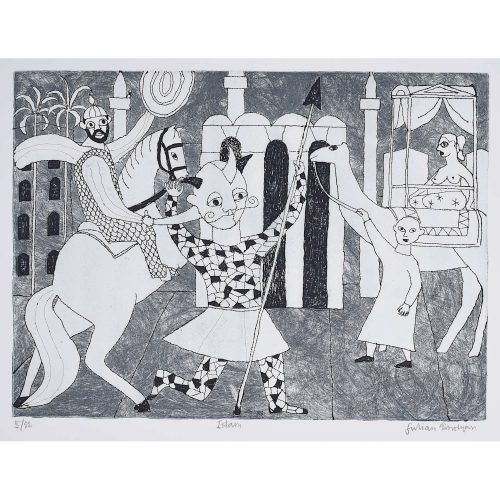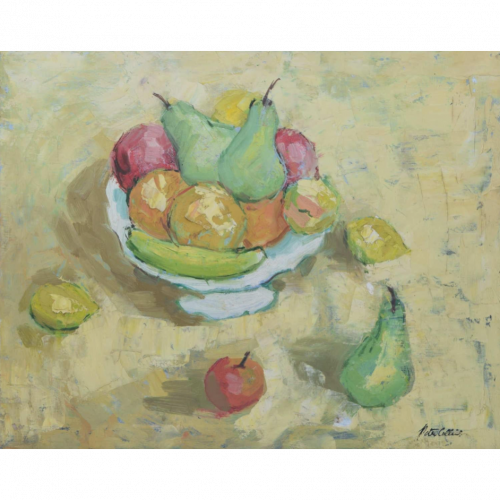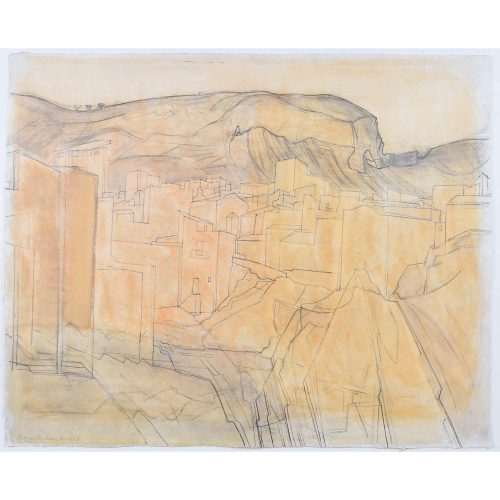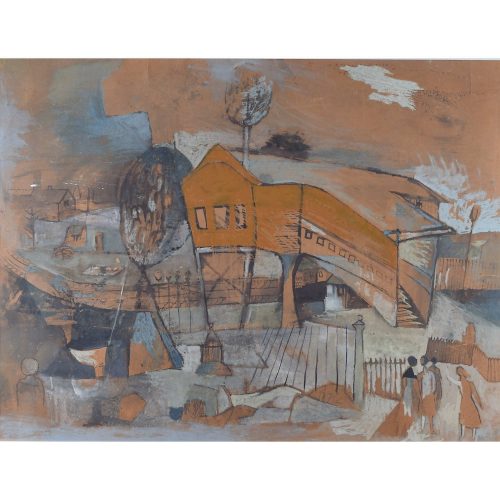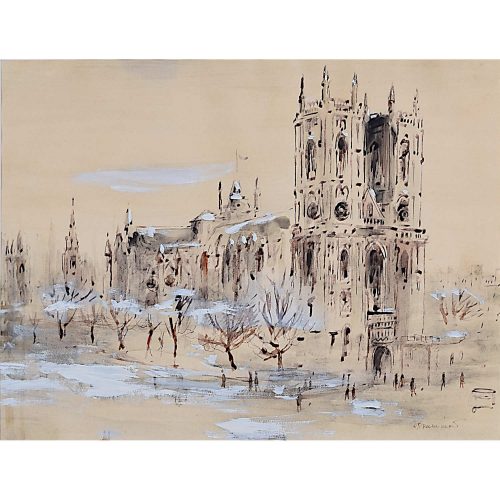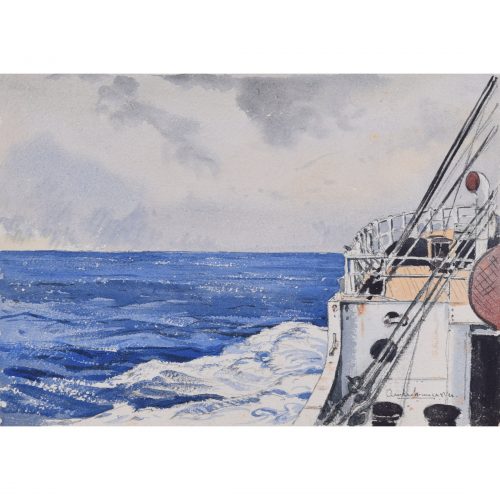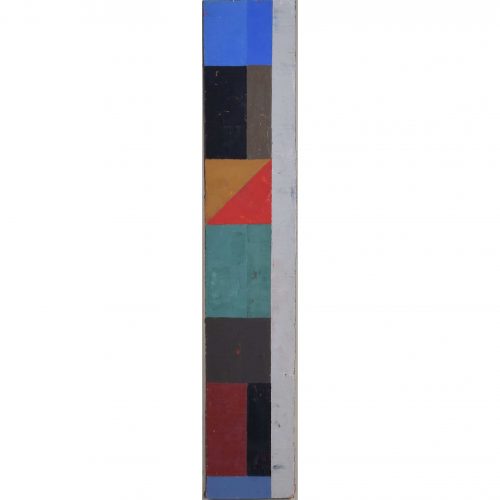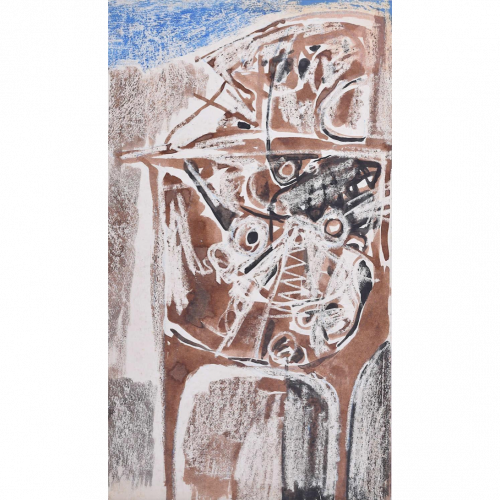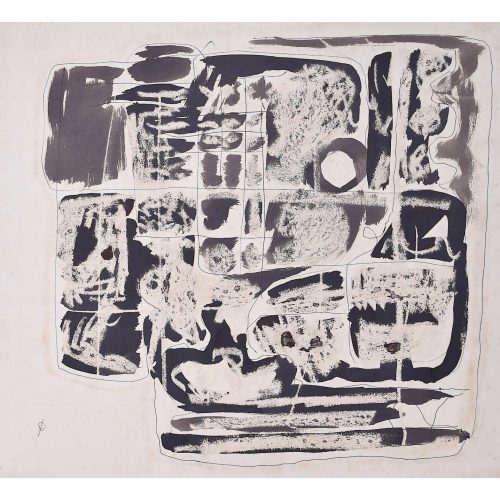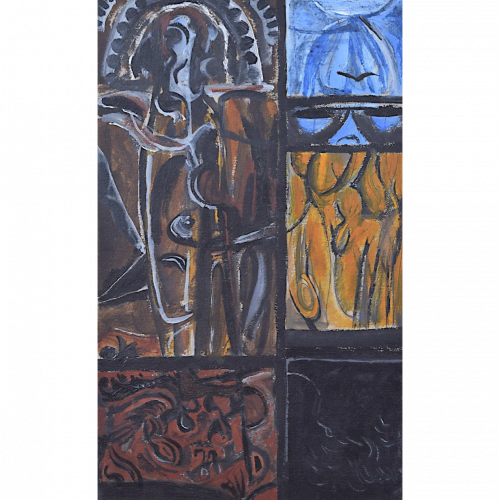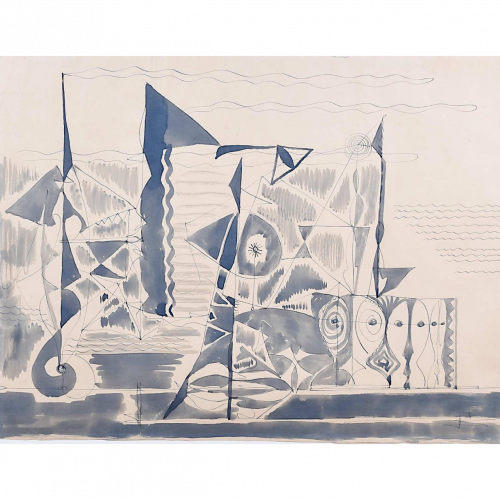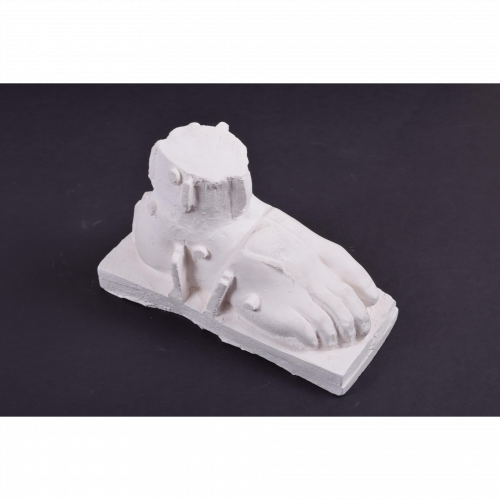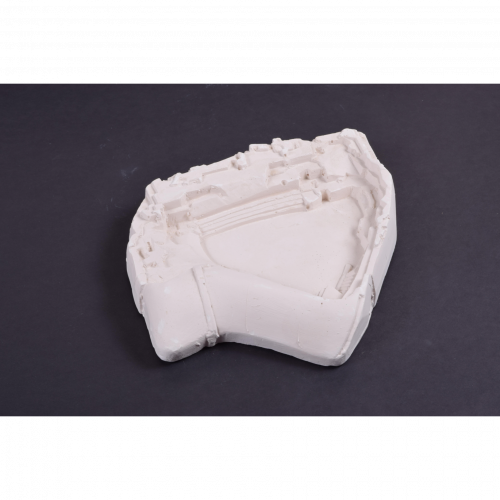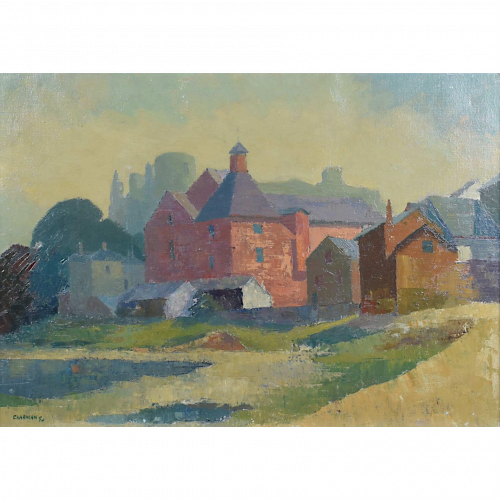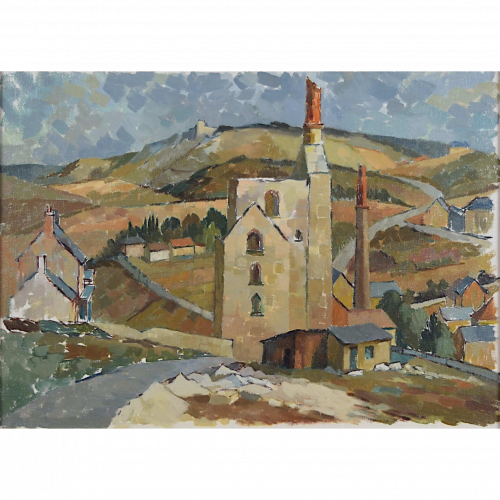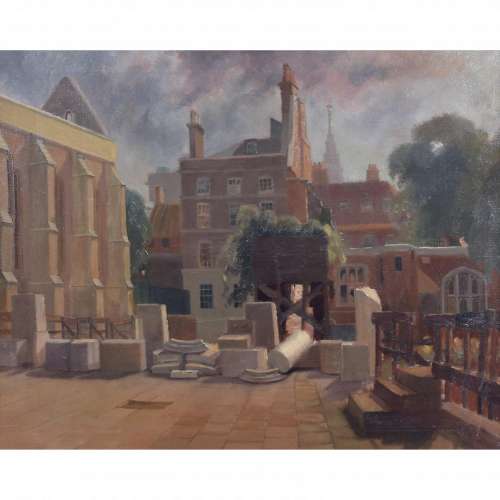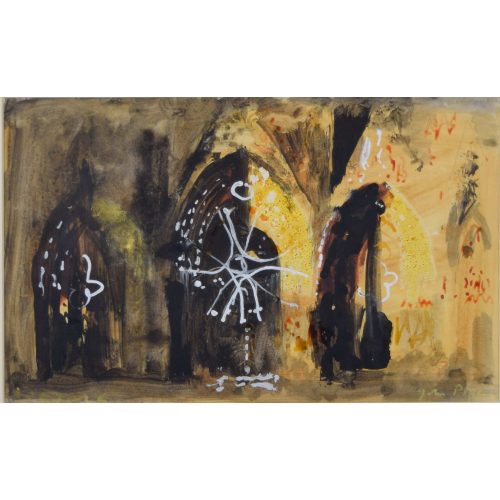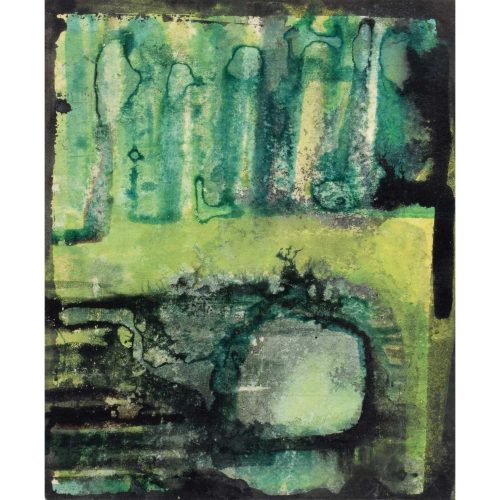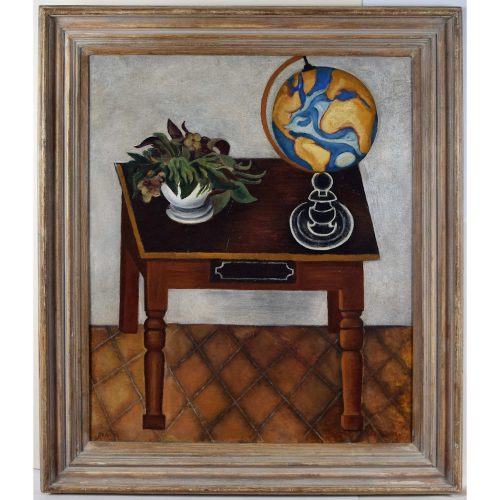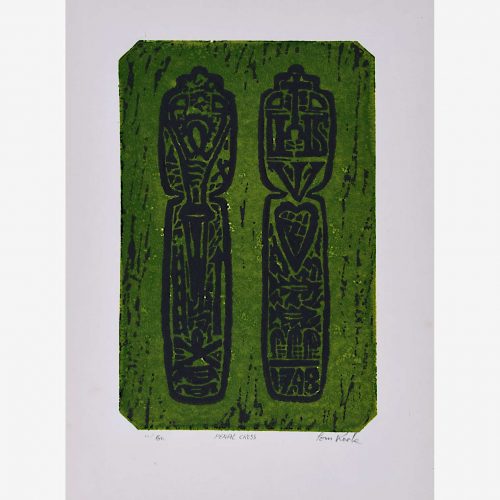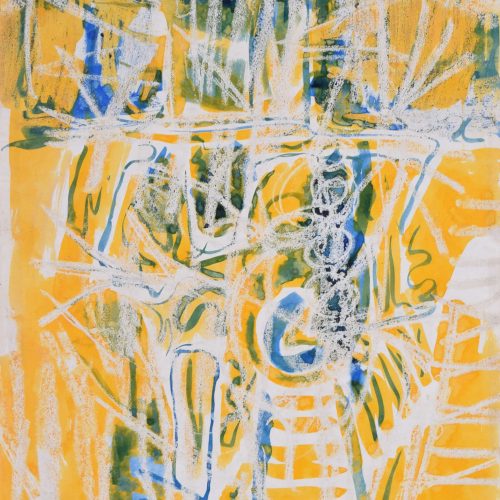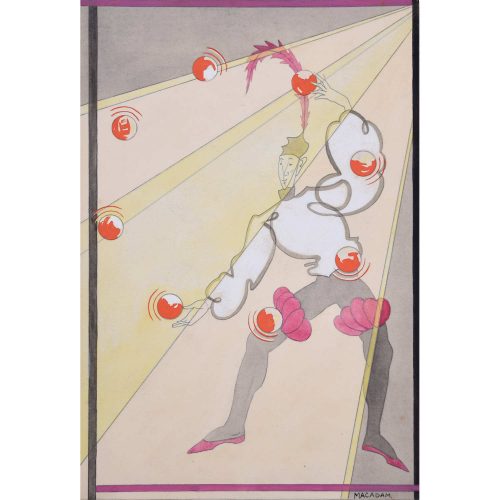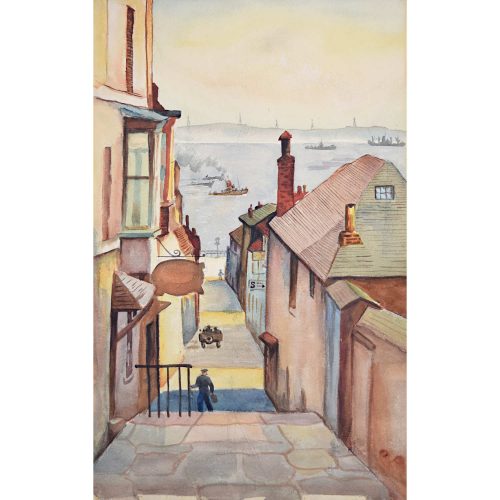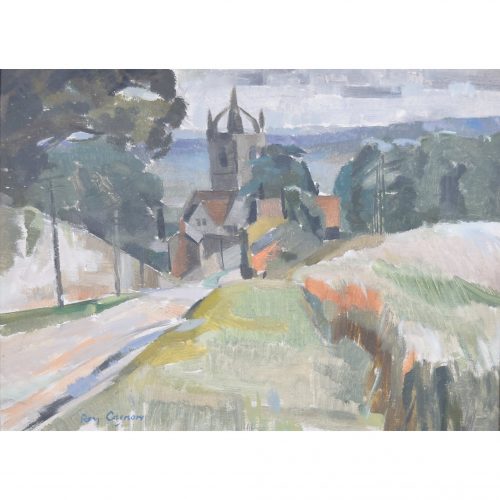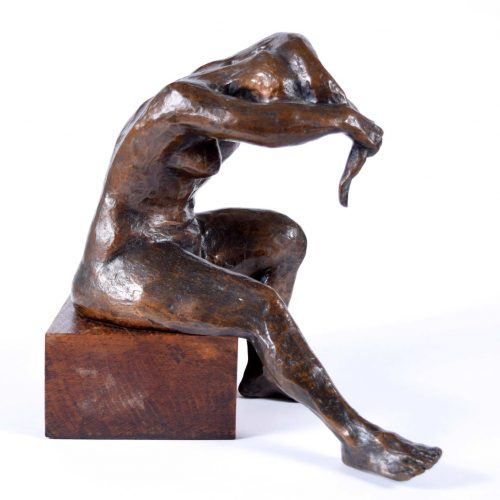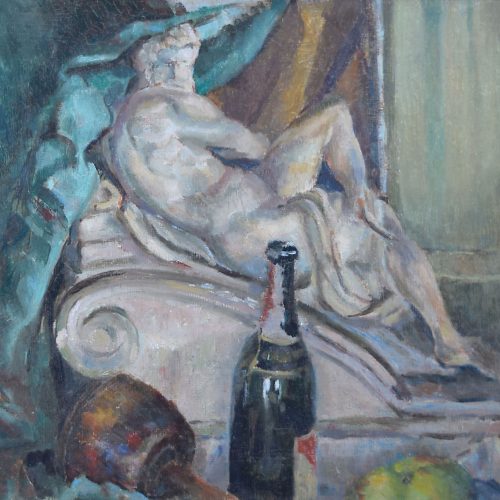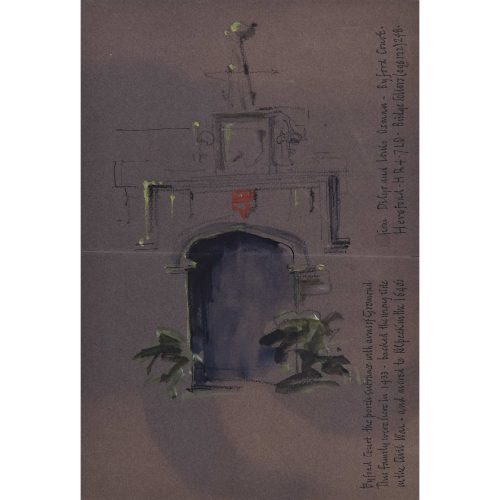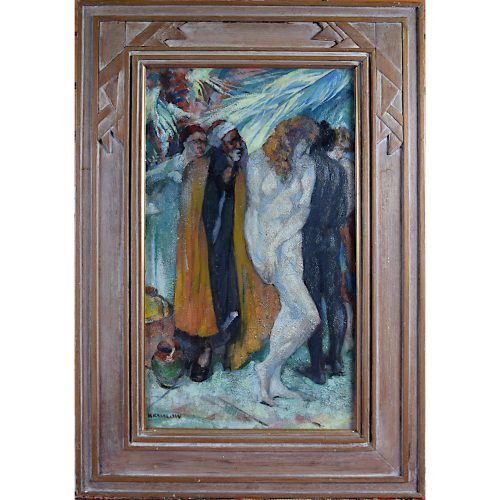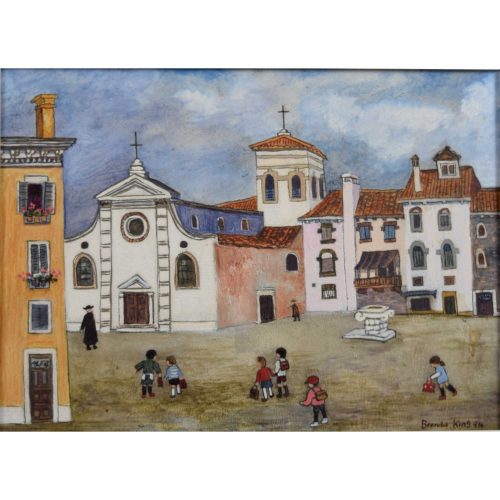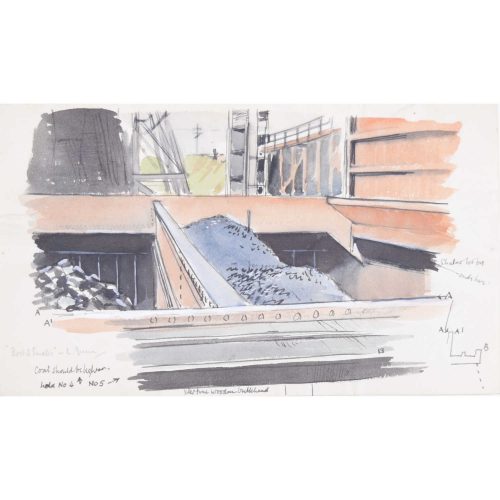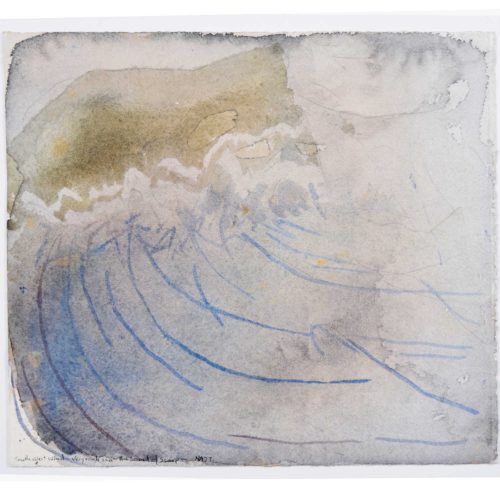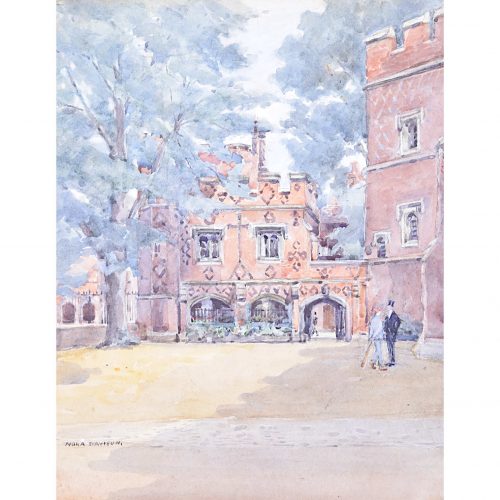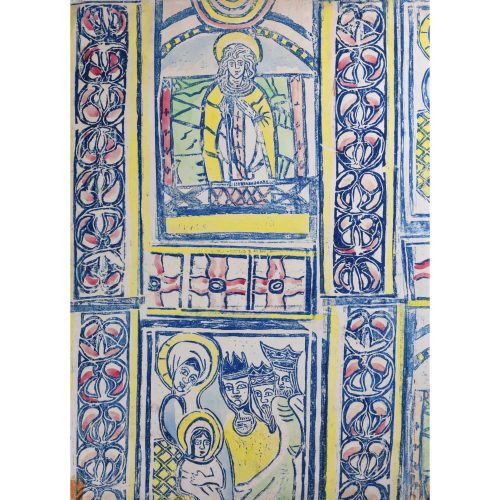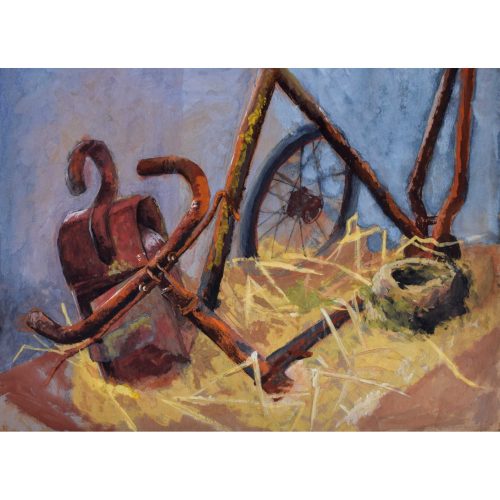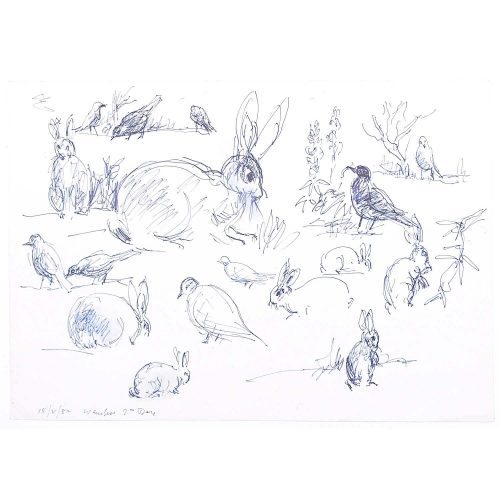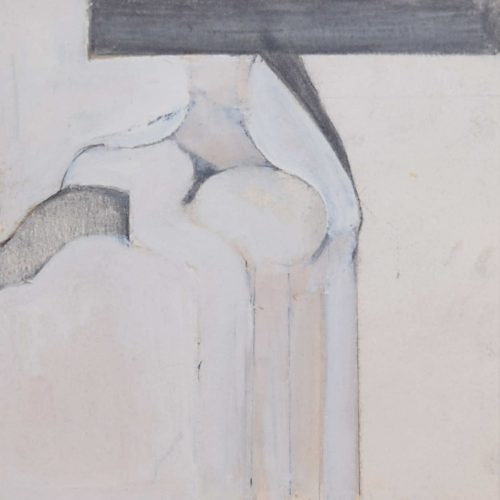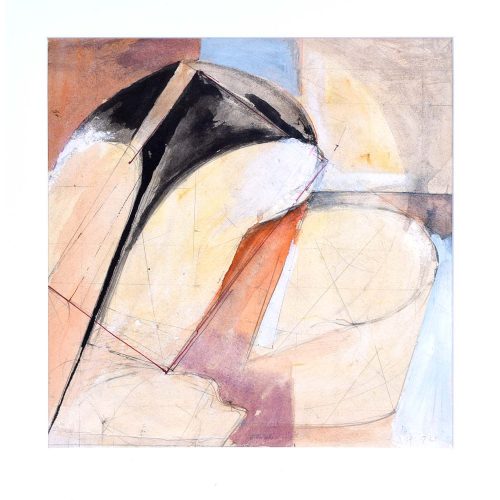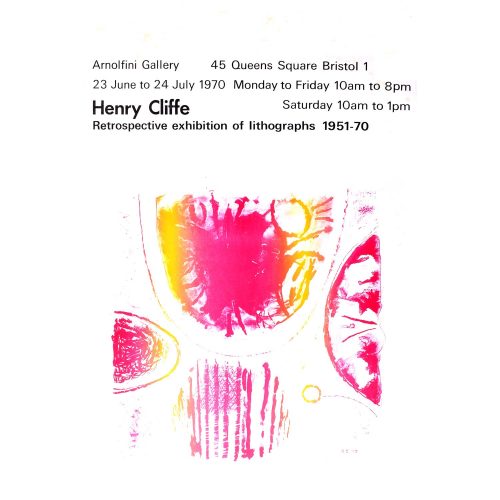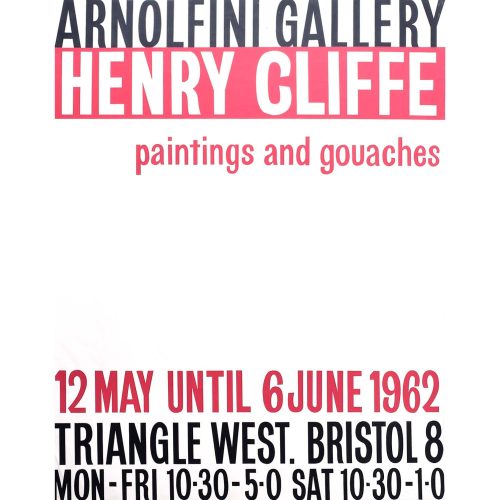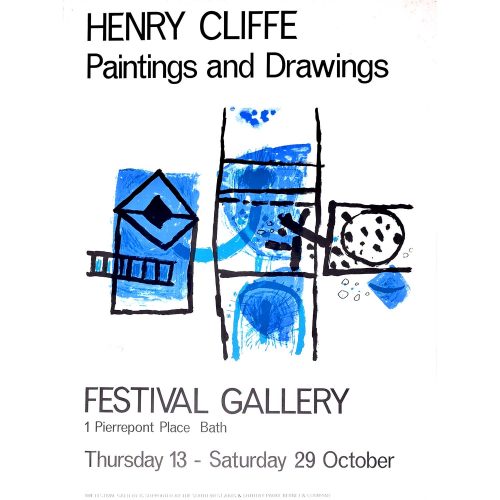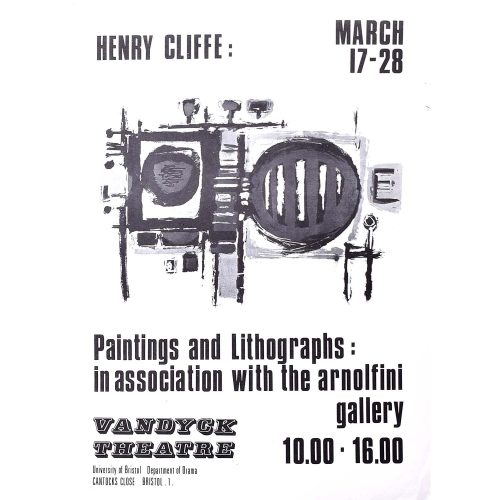Wilhelmina Barns-Graham (1912 - 2004)
Card for Sandra Blow's 75th birthday (1995)
Gouache and collage
34 x 21 cm
Inscribed to reverse "For Sandra, Happy Birthday, with love Willie, 13/9/95".
Barns-Graham's modern design features 70 vividly coloured circles; each one is different from the last, but all are geometrically aligned in neat rows and columns. Sandra Blow's initials appear separately as "S" and "B" in the design. Blow and Barns-Graham became friends in the 1950s; both spent lengthy periods of time in St Ives, and made major contributions to Britain's catalogue of post-war art.
Wilhelmina Barns-Graham, known as Willie, was born in St Andrews, Fife, on 8 June 1912. Her parents were second cousins, and their respective families were well established representatives of minor Scottish gentry from both the east and west of the country.
As a child, Barns-Graham showed very early signs of creative ability. It was at school that Wilhelmina decided that she wanted to be an artist, stating later in life that "painting chose me, not I it". After school she set her sights on Edinburgh College of Art where, after some dispute with her father (who was an emotional man prone to uncontrolled anger), she enrolled in 1931. During her time at Edinburgh College, Barns-Graham was taught by tutors including portrait painter David Alison and painter William MacTaggart. Her friends there included the influential Scottish painters Robert MacBryde, Robert Colquhoun, and William Gear.
After her education, Barns-Graham made study trips to Paris, London, and St Tropez before moving to St Ives, Cornwall, in 1940 (at the suggestion of the Edinburgh College of Art's Principal Hubert Wellington). Barns-Graham moved near to where a group of modernist artists had settled, at Carbis Bay - this was a pivotal moment in her life. On one of her first evenings there she met the sculptor Barbara Hepworth, who made an immediate and lasting impression on her. She then went on to meet Borlase Smart, Alfred Wallis, and Bernard Leach, as well as the painter Ben Nicholson and the sculptors Naum Gabo and Margaret Mellis. After two weeks in St Ives, Barns-Graham acquired her first studio, directly below the Porthmeor Gallery which was the administrative headquarters of the St Ives Society of Artists. Her paintings at the time were heavily influenced by the Cornish landscapes and the St Ives harbour. During 1940 and 1941, Barns-Graham contributed to the war effort by volunteering in a factory making camouflage nets.
In 1942 Barns-Graham became a member of the Newlyn Society of Artists, in which she exhibited with every year, and the St Ives Society of Artists. Whilst establishing herself in St Ives, Barns-Graham also continued to send work back to Scotland for major exhibitions held there such as the Royal Scottish Academy's 117th Exhibition in 1943. The 1940s were an active time for the St Ives Society of Artists who received a number of invitations to send exhibitions and groups of works to galleries in the UK and abroad, Barns-Graham's work was always included in these as the Society's secretary, Borlase Smart, thought highly of her work.
Barns-Graham's first opportunity to exhibit in London came when her work was included in a group exhibition of six at the Redfern Gallery. This was due to the introduction and support of Patrick Heron, who had visited Barns-Graham's studio in St Ives and was excited by her work. Barns-Graham would later have her first one-person exhibition in London at Redfern in 1952.
After a few years of tension, Barns-Graham eventually left the St Ives Society of Artists in 1949, becoming one of the founding members of a new breakaway group named Penwith Society of Arts. The first Penwith Society exhibition opened in June 1949 to huge success - 2755 paying visitors came to see it.
Provenance: the Jonathan Grimble Estate; the Sandra Blow Estate.
Condition: very good; in original frame.
If you’d like to know more, please email
info@manningfineart.co.uk or call us on 07929 749056.

